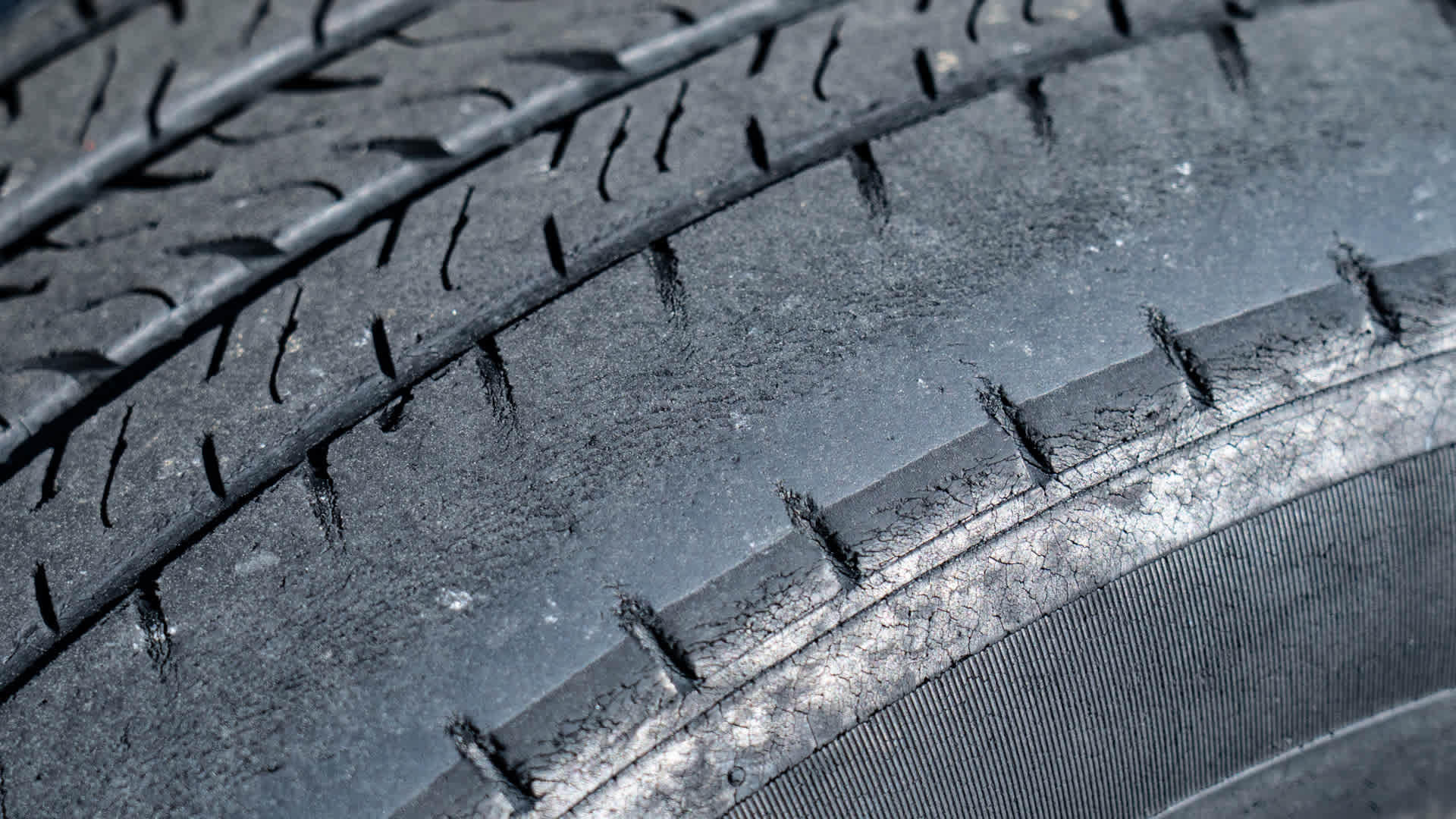Tire News & Information
Free shipping
Best price guarantee
Special pricing
Financing with Resolve
Easy returns

Every time you navigate a curve or turn your steering wheel, your tires perform a complex dance of physics that keeps your vehicle on its intended path. This invisible force working beneath your vehicle determines whether you smoothly glide through corners or struggle to maintain control.
The science behind how tires grip the road during turns involves sophisticated engineering principles that affect everything from daily commuting to high-performance driving. Modern tire technology has evolved to maximize this crucial force that stands between you and potentially dangerous situations on the road.
Understanding the mechanics of tire behavior during cornering empowers drivers to make better decisions about tire selection, maintenance, and driving techniques. This knowledge becomes especially valuable when evaluating tire performance characteristics or troubleshooting handling issues.
What is the Cornering Force?
Cornering force is the lateral force produced by your tires when turning your vehicle. This sideways force develops at the tire contact patch—the small area where rubber meets road—to counteract the centrifugal force pushing your vehicle outward during a turn. Think of it as the invisible hand that grips the road and pulls your vehicle through curves, working against the natural tendency of objects in motion to continue in a straight line.
The generation of cornering force depends on a phenomenon called slip angle: the difference between where your wheel points and where it actually travels. When you turn your steering wheel, the tire doesn't immediately follow the exact direction it's aimed. Instead, the tire deforms slightly, creating an angle between its pointing direction and its actual path of travel. This deformation causes the tire to act like a spring, with the rubber in the contact patch stretching and generating a reaction force that keeps your vehicle on course.
Understanding cornering force helps you grasp how your tires maintain vehicle stability during turns. The amount of force generated directly relates to how well your vehicle responds to steering input. Engineers measure this relationship through cornering stiffness—the amount of lateral force produced per degree of slip angle. Higher cornering stiffness means your tires generate more grip with less deformation, resulting in more precise handling and better overall vehicle control. This fundamental principle underlies all aspects of vehicle dynamics, from the design of economy car tires that prioritize comfort and efficiency to ultra-high-performance tires engineered for maximum grip on racetracks.
How Does Cornering Force Work?

The Physics Behind Tire Grip During Turns
As you navigate a curve, your tires undergo a transformation, adjusting their path slightly from the steering direction. This subtle shift creates a slip angle, which is the difference between the intended direction and the actual trajectory.
This slip angle is critical in generating lateral force. The tire's deformation acts like a reactive force, enabling the vehicle to maintain its course. Tire dynamics indicate that cornering force increases with the slip angle, typically leveling off around 4-6 degrees.
The Relationship Between Cornering Force and Vehicle Handling
Cornering force plays a pivotal role in determining vehicle handling characteristics. A stronger cornering force results in superior grip and more responsive steering. It counterbalances the outward push, ensuring stability through turns.
The concept of cornering stiffness is key, reflecting the force generated per degree of slip angle. Tires with higher cornering stiffness offer enhanced handling, reducing the need for excessive steering adjustments. This balance ensures a smooth and controlled driving experience.
What Factors Affect Cornering Force?
Tire-Related Factors
Tire pressure is essential for maximizing the contact area between the tire and the road, ensuring optimal grip. Maintaining the right pressure helps the tire maintain its shape, which is crucial for effective cornering.
The construction of the tire, such as radial versus bias-ply, affects its ability to generate lateral forces. Radial tires, with their flexible sidewalls, generally provide superior cornering performance. The tread compound also plays a role—softer compounds enhance traction but may lead to faster wear.
Temperature is another key factor; tires perform best within a designated range. If tires overheat, they can lose effectiveness, while colder tires may not grip as well. Tread patterns affect grip by channeling water away and providing mechanical traction, impacting performance in various conditions.
Vehicle and Driving Conditions
The weight of the vehicle affects how much force a tire can generate. More weight can enhance grip to a point, beyond which performance may diminish due to overloading.
Higher speeds require greater cornering force to navigate turns effectively. The suspension setup and alignment must be precise to ensure that tires can produce the necessary force for stability and control.
Road conditions, such as wet or icy surfaces, significantly impact grip levels. Load transfer, or the redistribution of weight during turns, influences how each tire handles the force, affecting overall vehicle dynamics and stability.
Understanding Cornering Force Formulas and Measurements
Evaluating Cornering Force
In vehicle dynamics, cornering force is quantified in units such as pounds or Newtons. This measurement is vital for assessing how well tires maintain traction during turns. Manufacturers rely on these metrics to develop tires that align with diverse performance requirements, ensuring both safety and efficiency.
The formula for cornering force integrates slip angle, vertical load, and tire-specific features. By examining these elements, engineers can determine how they collectively contribute to the lateral force needed for precise cornering. This analysis aids in fine-tuning tire designs to enhance performance across various driving conditions.
Insights into Cornering Stiffness
Cornering stiffness, or cornering power, reflects a tire's ability to convert steering input into lateral force swiftly. By dividing the cornering force by the slip angle, engineers can gauge how effectively a tire grips the road. Enhanced cornering stiffness results in more responsive handling, providing drivers with better control and stability.
This parameter is essential for customizing tires to meet specific driving demands. Whether for routine commuting or high-speed maneuvers, understanding cornering stiffness enables the creation of tires that balance performance and comfort effectively.
Utilizing Data Logging
In the realm of modern vehicles, data logging systems capture real-time cornering forces during driving. This technology offers invaluable insights, allowing drivers to refine their handling techniques and maximize tire performance. Engineers use this data to further improve tire designs, ensuring they cater to the evolving preferences of drivers and adapt to different road conditions.
How Cornering Force Relates to Other Tire Forces
The Circle of Forces Concept
Tires operate within an intricate balance of forces, with a fixed capacity for total force generation. This balance is known as the "circle of forces." When cornering, tires must distribute their limited grip between lateral, acceleration, and braking forces. The optimal cornering occurs when a vehicle maintains a steady speed, allowing the tires to focus entirely on lateral grip.
By understanding this distribution, drivers can enhance their vehicle's performance in curves. Managing speed and avoiding sudden braking or acceleration during turns maximizes the tire's ability to maintain traction and control.
Self-Aligning Torque Connection
As tires produce cornering force, they also generate self-aligning torque, a key element in steering dynamics. This torque naturally returns the steering wheel to center after a turn, driven by the pneumatic trail—the offset between the point of force and the wheel's center.
This self-aligning action provides important feedback to the driver, ensuring a smooth transition between steering inputs and vehicle response. Recognizing how self-aligning torque interacts with cornering force enhances the driving experience, making steering more responsive and intuitive.
Signs Your Tires Aren't Generating Proper Cornering Force
When your tires fail to produce sufficient cornering force, several signs emerge. One major indication is a sensation of instability during turns. If the vehicle doesn't feel securely planted on the road, it signals that the tires are not providing enough traction.
Indicators of Poor Performance
- Constant Steering Adjustments: Frequently needing to tweak the steering wheel to maintain your path indicates that the tires lack the necessary lateral grip. This can make driving more demanding and impact control.
- Tire Noise at Low Speeds: Hearing tires make noise during standard turns, especially at lower speeds, suggests insufficient traction. This affects safety and performance.
Tire Wear and Response Issues

- Irregular Tire Wear: Check for uneven wear patterns on the tires, particularly on the edges. This can hint at alignment or pressure issues, both of which reduce traction.
- Inconsistent Steering Feedback: If the vehicle reacts unpredictably to steering inputs, it indicates a lack of sufficient grip from the tires. This unpredictability can complicate driving, particularly in critical moments.
- Increased Stopping Distances: Longer distances required to stop when turning and braking suggest the tires aren't optimizing their grip on the road, affecting both cornering and overall safety.
How to Maximize Your Tires' Cornering Force
Optimizing tire performance starts with regular maintenance. Begin by verifying that your tires are set to the correct pressure levels. This adjustment ensures they maintain the necessary form for optimal traction and effective cornering.
Essential Maintenance Practices
- Tire Rotation: Switch the positions of your tires periodically to achieve uniform wear. This practice allows each tire to maintain consistent performance, improving overall vehicle handling.
- Alignment: Ensure your vehicle's alignment is precise. Accurate alignment maximizes the tire’s contact with the road, enhancing the lateral forces needed for stable cornering.
Selecting the Right Tires
Choosing tires that match your driving environment and vehicle specifications is crucial. Performance tires offer superior cornering capabilities, with advanced designs that improve grip. Consider these options for enhanced handling on challenging roads.
Monitoring Tire Condition
- Tread Health: Monitor tread levels and replace tires when they approach minimum depths. Adequate tread is crucial for effective water dispersion and maintaining control.
- Temperature Awareness: Pay attention to tire temperatures, especially during intense driving. Keeping tires within their optimal heat range ensures they deliver consistent performance and grip.
Understanding cornering force empowers you to make informed decisions about your tires and driving techniques, ultimately enhancing both safety and performance on the road. When your tires generate optimal cornering force, every turn becomes more predictable, controlled, and confident. Ready to upgrade your vehicle's handling? Shop for tires online and find the best deals with us, where we make finding the perfect tires for your driving needs simple and affordable.
Ready to find the perfect tires?
Search By